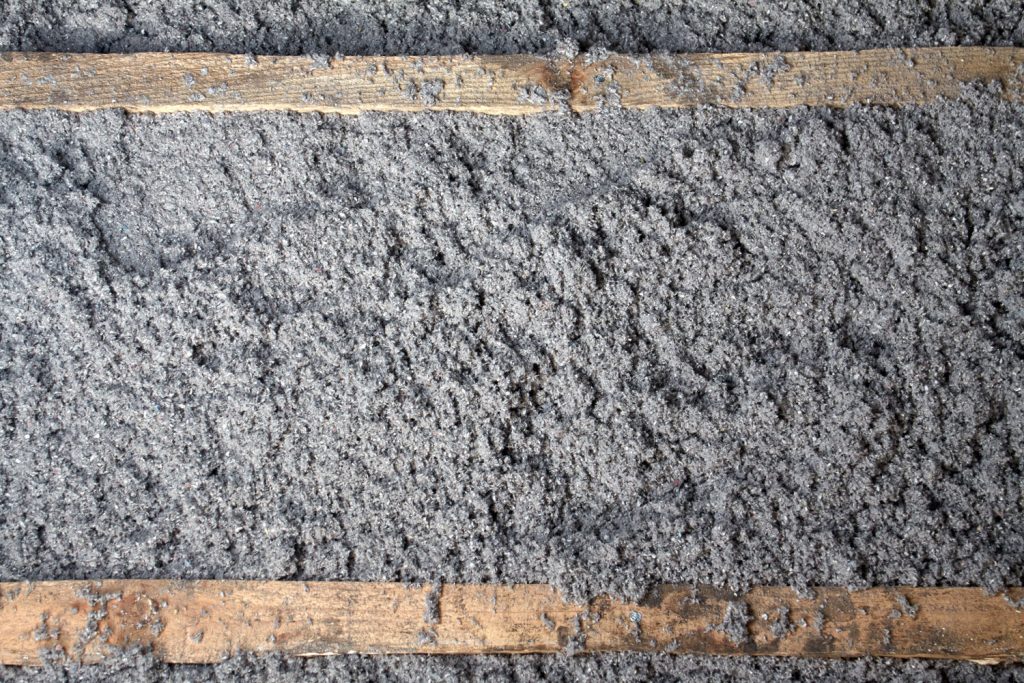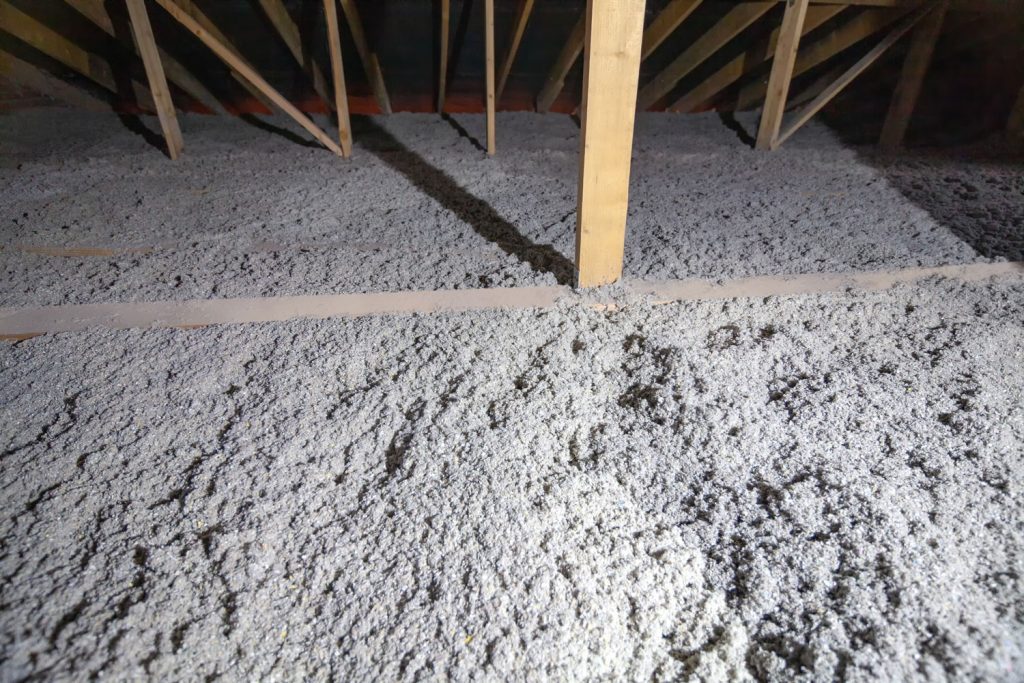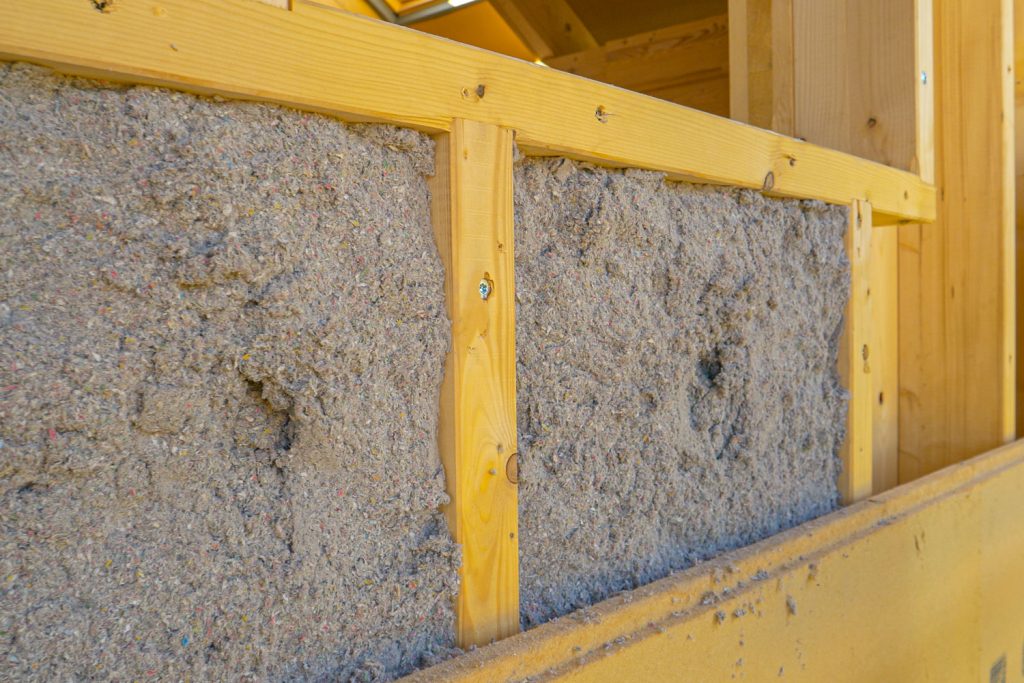Cellulose insulation often does a good job of bringing comfortable temperatures to spaces. The substance can also reduce noise levels reasonably well. Still, can cellulose insulation block sound completely? We researched extensively on this topic to give you this answer.
Cellulose insulation cannot block sounds completely. However, this insulating agent can reduce significant noise levels, particularly when you install the dense variant. Still, blown-in insulation often beats fiberglass insulating agents in reducing sound levels.
As you go through this post, you’ll understand the noise reduction qualities of cellulose insulation in greater detail. Also, we’ll compare fiberglass and cellulose to check which material is the better soundproofing agent. We’ll also tackle other topics about insulation and soundproofing, so let’s dive into this guide!

Can Cellulose Insulation Reduce Sound?
Cellulose insulation functions by trapping air to help normalize temperature levels in certain spaces. In turn, the composition can also help trap sound waves since sound travels through the air. However, the sound reduction levels can differ based on the density of the cellulose insulation. The loose fill variant may block less noise than its denser counterpart.

Interested buyers can look at a particular insulation’s noise reduction coefficient (NRC) to check for the amount of sound inhibited by the material. Here’s a quick overview of some of the different NRCs:
- 0 = No sound absorption.
- 0.5 = The material can absorb 50% of the acoustics. The other 50% will be reflected in the noise's origin.
- 1.0 = 100% of the sound will be absorbed.
Take note that this type of insulation generally doesn’t block all sounds, especially loud noises. However, high-quality and dense cellulose insulation may block significant noise levels.
Check out this product on Amazon.
Is Fiberglass Or Cellulose Better For Soundproofing?
Blown-in cellulose can beat fiberglass in terms of soundproofing. Still, it depends on the construction of the materials if one can defeat the other in the noise reduction department. Take a look at the average NRC values of these two types of materials:
- Fiberglass (3-1/2-inch thick): 0.65 to 0.7
- Blown cellulose: up to 0.8
To put those numbers into perspective, imagine a 105 dB noise, which is roughly similar to the sound level of a lawnmower outside a room. Fiberglass can reduce the racket from 105 dB to 75 dB, which can still be quite noisy for a light sleeper. But cellulose can reduce the sound down to 40 dB, allowing for more quiet scenarios than rooms with fiberglass padding.
Check out the video below for a demonstration of the soundproofing qualities of fiberglass and cellulose insulation:
If you choose to install cellulose for its soundproofing traits, make sure to set it up properly. Improper cellulose insulation can result in inefficient noise dampening. Professional assistance can be an ideal choice to ensure the sound inhibiting characteristics of cellulose remains after the installation.
Why Does Fiberglass Absorb Sound?
Fiberglass absorbs sounds with the help of thermal isolation. The thickness of the material will help prevent intense cold or heat from entering spaces by blocking the air from the opposite side of the material.
If used as insulation, fiberglass often does a good job in absorbing and reflecting sound, thanks to its Sound Transmission Class (STC). Take note that a substance with a relatively high STC rating can perform better in reducing noise than others. As for fiberglass insulation batts, the average STC rating for these products is 39. In comparison, a single pane glass window will have a typical STC range of 26 to 28.
Check out this product on Amazon.
What Is The Best Insulation For Noise Reduction?

Keep in mind that the best insulation for noise reduction may differ for each user. Think about certain factors before finalizing your purchasing decision, which includes:
- Noise level or source: Certain insulating compounds may significantly reduce sounds like a crying baby from the neighbor's house. However, these products may have difficulty reducing noises like a lawnmower from next door.
- Noise propagation: Sound often falls under two main categories: airborne or structure-borne. Install insulation that best suits your environment as some models might work better in reducing specific noise classifications.
- Material: Some substances work better in dampening noises than certain options. However, interested customers should also think about other properties provided by the insulating material. For example, a particular type of insulation might be better at reflecting sounds but may also contain flammable agents.
6 Best Insulations for Noise Reduction
After contemplating the factors mentioned above, keep in mind that some insulation units have features and traits that make them excellent contenders. Some of these products are the following:
1. Owens Corning 703 Fiberglass Board
This fiberglass insulation board has an NRC that's close to 1. It does a fairly good job of reducing noise from 300 Hz and up. If you want to hear what a 300 Hz noise sounds like, watch the video below. But be wary as the sound can be quite loud if you’re wearing headphones.
Check out this product on Amazon.
2. Johns Manfille 704 Fiberglass Batts
This product is a sound barrier insulation with decent thermal resisting properties. Interested buyers should note that this product isn't faced insulation, which means it doesn't have a vapor barrier. In turn, it might not be suitable in certain applications like the basement ceiling.
Check out this product on Amazon.
3. Roxul Rockboard 60 Mineral Wool Board
At 8 pounds per sheet, this insulation board is quite heavy. But the tradeoff for its heftiness is its excellent soundproofing. This insulating material has an R-Value of 4.3, which is higher than the average rating of blown-in cellulose (3.70 per inch) and expanded polystyrene insulation (4.00 per inch). In turn, this product can reduce intense sound and temperature levels from invading spaces.
Check out this product on Amazon.
4. BRB ProRox SL 960 Insulation Board
This insulation board has a high-density construction, making it ideal for minimizing noise from entering rooms like bedrooms and meeting rooms. With a 12.6 R-Value for the 3-inch thick variant, this product can do a great job of dampening relatively loud noises.
Check out this product on Amazon.
5. Auralex Wall Insulation
This product has an NRC of 1.00, so users can expect it to block a significant amount of sound from entering rooms. Additionally, it can resist temperatures up to 1,200 degrees Fahrenheit to help protect homes from extreme weather.
Check out this product on Amazon.
6. Reflectix DW1202504 Spiral Duct Wrap
Although this product is specific for ductwork use, it does well in reducing noise from ducts. It has an R-Value of 4.2, which is quite satisfactory for many homes in different regions. If used in ideal environments, this insulation can help reduce temperatures by 8 degrees Fahrenheit on a hot day.
Check out this product on Amazon.
Aside from the products mentioned above, you can also check out this post for great blown-insulation types to help dampen noise: Best Blown-In Insulation Types For Soundproofing.
Does A Higher R-Value Mean Better Soundproofing?
High R-Values mean excellent soundproofing and optimal heat resistance. Among the different materials used for thermal resistance, cellulose insulation has one of the highest R-Values in its class. It’s because this insulation material is quite dense, allowing it to have ideal sound dampening traits.
You can also read this post to check if adding drywall can enhance the thermal resistance of a space: Does Drywall Add R-Value And Help Insulate?
How Long Does Blown Insulation Last?

If installed in optimal conditions, blown insulation has a typical lifespan of 20 to 30 years. But you should also think about the factors that can reduce this insulation’s life, which include:
- Air pockets: Improper blown insulation installation can lead to air leaks. These gaps may expand the material over time, reducing the thermal resistance and soundproofing qualities of the product.
- Settling: Blown-in cellulose insulation often has the highest settling rate among other products of its class. Failure to address this issue quickly can result in severe energy efficiency concerns.
- Moisture: Since blown insulation generally has a recycled newsprint construction, it’s quite susceptible to moisture damage. Installing this type of insulation to properties experiencing reasonably wet climates might reduce the substance’s shelf life significantly.
Final Thoughts
Like other kinds of insulation, cellulose insulation blocks sound by trapping and reflecting different airborne noises. In particular, dense blown-in insulation does a reasonably better job as a soundproofing agent.
However, high-quality fiberglass batts can usually beat cellulose insulation in noise dampening. But certain fiberglass insulating products may have shorter shelf lives than cellulose variants. Therefore, homeowners may choose cellulose over fiberglass for long-term thermal resistance.
Interested property owners should still think about the installation of their chosen cellulose insulation. An improper installation process can lead to inefficient sound dampening features.








